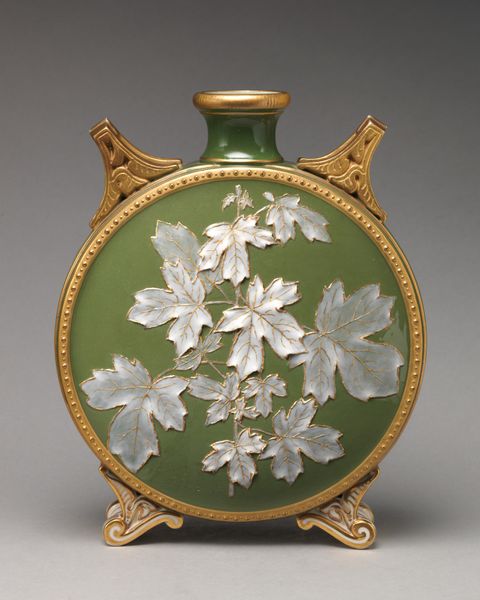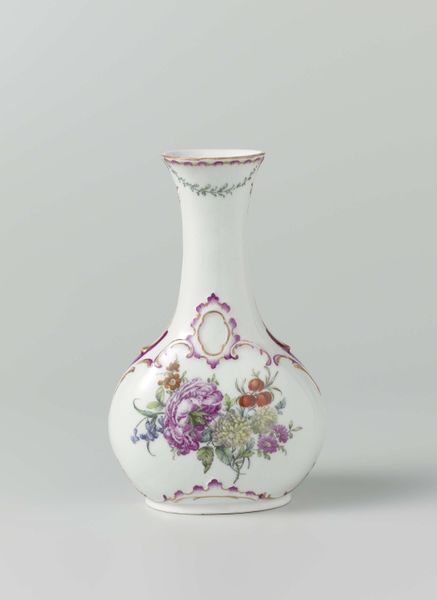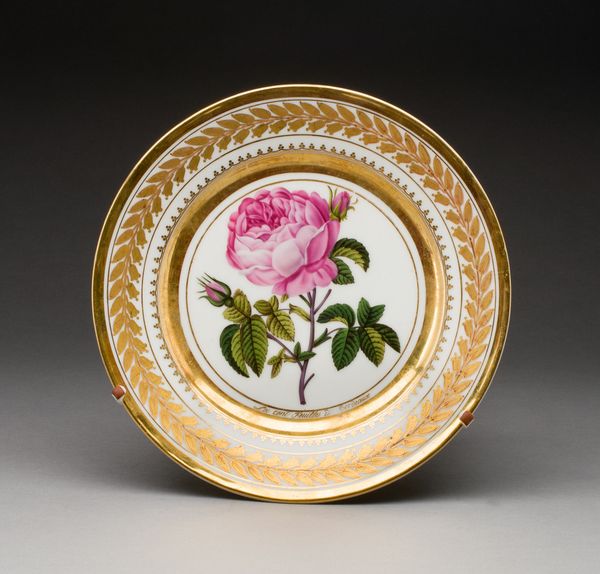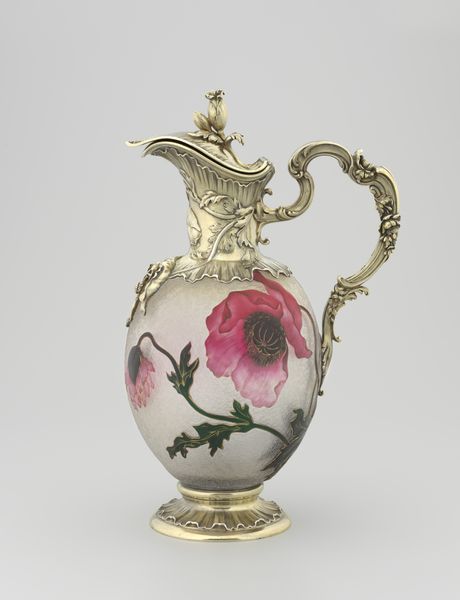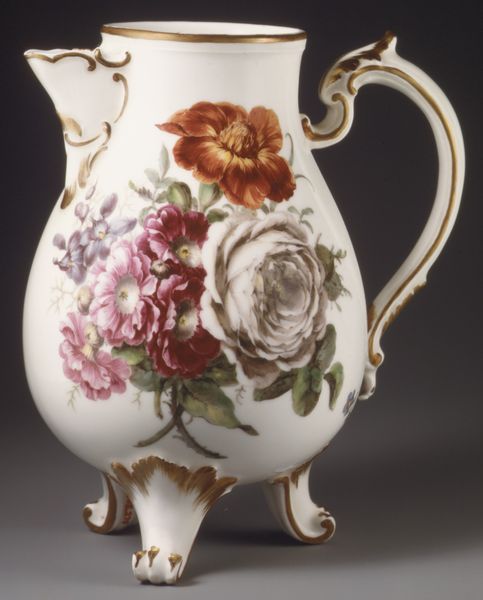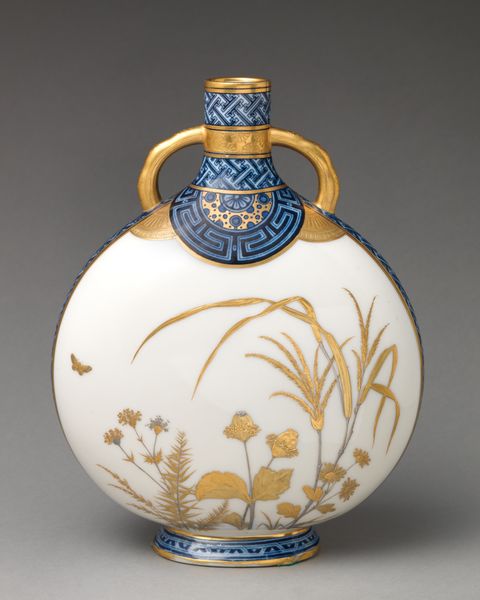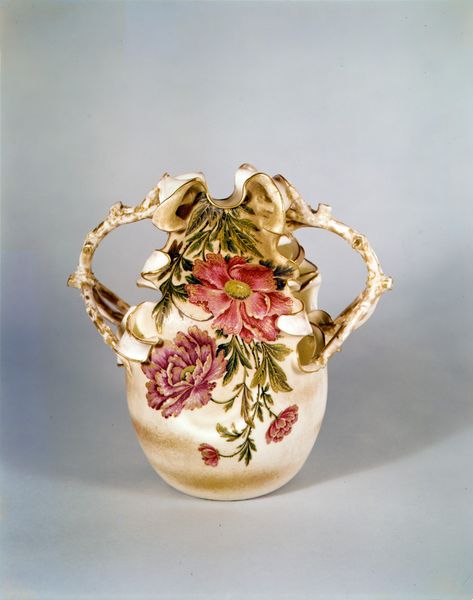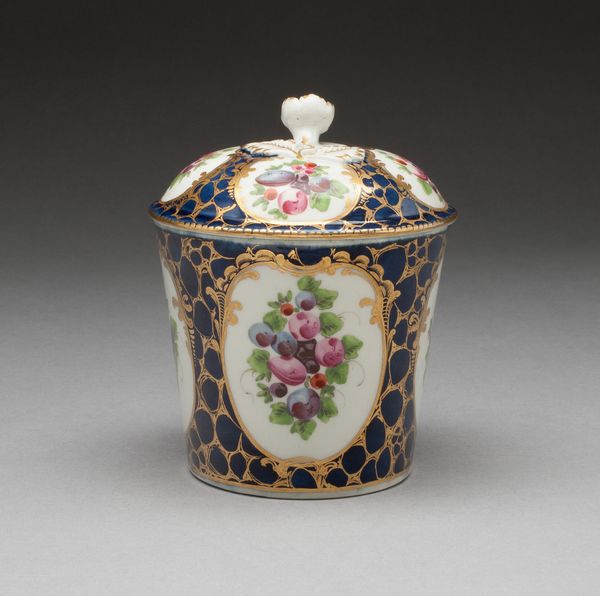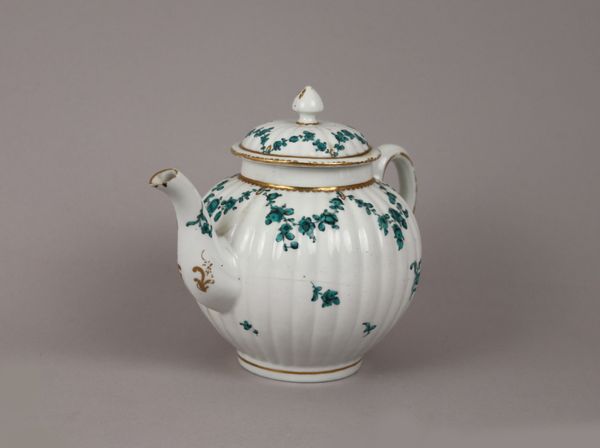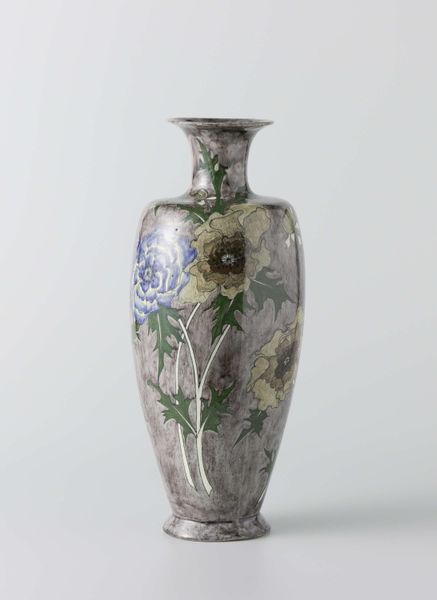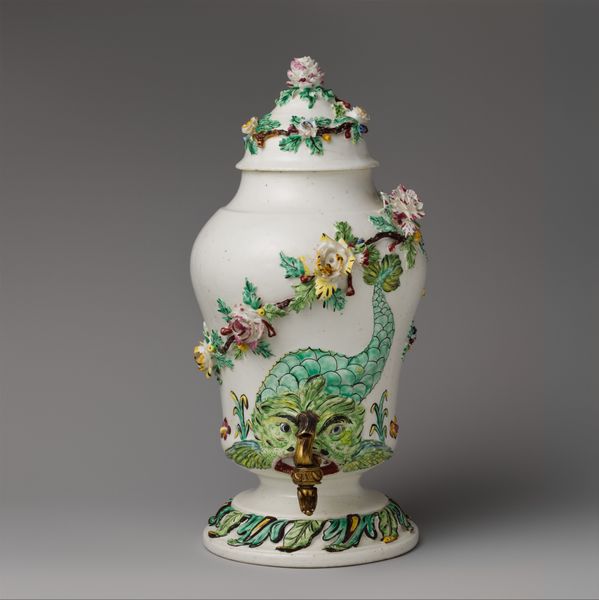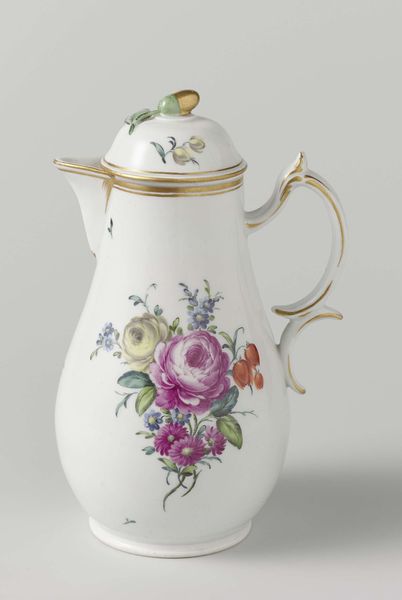
ceramic, porcelain, sculpture
#
ceramic
#
porcelain
#
sculpture
#
ceramic
#
decorative-art
Dimensions: confirmed: 7 × 5 7/8 × 2 7/16 in. (17.8 × 14.9 × 6.2 cm)
Copyright: Public Domain
Curator: Take a look at this porcelain moon flask, made by Grainger in the 1870s. Notice anything particular about it? Editor: My immediate reaction is one of delicate whimsy, oddly mixed with something darker, perhaps in those serpentine handles. The palette is rather pleasing too; soft pink, contrasting with the botanical illustration. Curator: Precisely! The contrast really speaks volumes. This was the Victorian era, and we see this sort of decorative excess becoming quite popular in mass production and decorative arts aimed at middle class homes. The serpent handles are meant to invoke a sense of history and power while the central design gives off gentleness and a fashionable design for serving. Editor: Interesting! The snake handles especially make me consider the societal obsession with the exotic during that period, coupled with anxieties of the industrial age. Did Grainger, through their particular choice of material, target this at all toward the market that fueled global exploitation? Curator: The Grainger factory very much relied on ceramic molds at this time to make their decorative products available on a larger scale, creating this dichotomy. It’s a porcelain replica meant to emulate wealth and sophistication to its consumers. These porcelain artworks helped to democratize the decorative, I’d argue. Editor: So, it allowed the burgeoning middle class to signal status. But weren't the artists, the porcelain workers, part of that same rising middle class? Did the commodification cheapen or enrich the production and lives of ceramic workers? Curator: Those factories usually came at the expense of ceramic workers unfortunately, their access to higher materials only allowing the product’s artistic intention. Grainger themselves likely made a large profit on each design without allocating appropriately to the artists and assistants that made the moon flasks themselves. Editor: It really pulls you in with the beauty of the craftsmanship, but the more you understand its making and distribution, the more you consider labor and consumption in 19th-century art. Curator: It certainly complicates our reading. But it also makes one wonder—are contemporary mass-produced pieces really any different? Editor: A sobering thought, indeed.
Comments
No comments
Be the first to comment and join the conversation on the ultimate creative platform.
